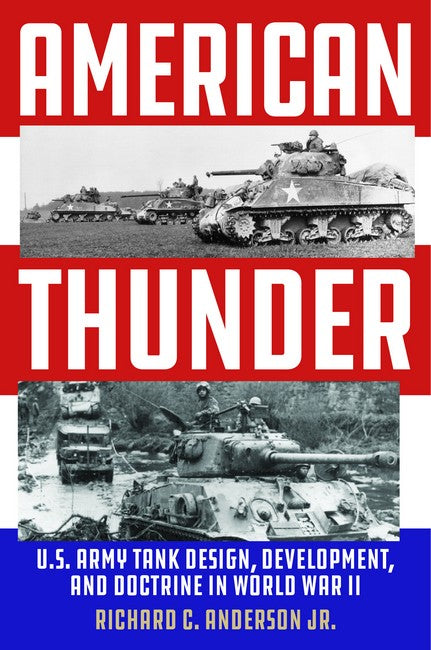Richard C. Anderson Jr. is a historian with degrees from George Mason University and American Military University. He is the author of Artillery Hell (with Curt Johnson), Hitlers Last Gamble (with Trevor N. Dupuy and David Bongard), and Cracking Hitlers Atlantic Wall. After nearly thirty years as a military analyst for the U.S. government, he is now a full-time writer. He lives in Bremerton, Washington.
Request Academic Copy
Please copy the ISBN for submitting review copy form
Description
American Thunder is an exceptionally fine account of U.S. tanks in World War II. It provides a broad perspective on technical development, army tactical doctrine, and tank unit organization. Most importantly, it clearly connects how all of these factors influenced the combat effectiveness of U.S. tanks on the WWII battlefield. It addresses the many controversies about U.S. tanks head-on in a very convincing fashion. Very detailed and thoroughly researched, this book is a “must” for anyone seriously interested in the U.S. Army of World War II.
— Steven Zaloga, author of Armored Thunderbolt: The US Army Sherman Tank in World War II
American Thunder: U.S. Army Tank Design, Development, and Doctrine in World War II is an in-depth history of the mobilization of U.S. armored forces for WW II. Starting practically from scratch, the Army equipped, trained, and fielded 16 armored divisions and more than 70 separate tank battalions. In minute detail, the author relates the successes, failures, and controversies involved in this accomplishment. This book is destined to become a classic reference work for students of U.S. armor in WW II.
— Joe DeMarco, coauthor of the website, Sherman Minutia
The publication of Richard Andersons study of the development of U.S. armored fighting vehicles for World War II will be welcomed for its value as a wide-ranging reference that stimulates ones understanding of how myriad concepts and persons contributed to resolving so many difficulties and false steps in an era particularly fraught with dangers. His meticulous use of contemporary documents, reports, and studies clarifies many obscure developments with detailed analyses of the ways taken to produce such a highly successful military arm. The reader will be treated to new assessments of decision making, lessons learned, and controversies that remain controversial to this day. I was impressed equally by the excellent layout of the book and well-chosen photos. Enjoy the read!
— Kenneth W. Estes (Colonel U.S.M.C., Ret.), author of Marines Under Armor and Tanks on the Beaches

